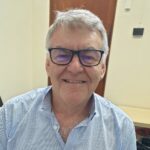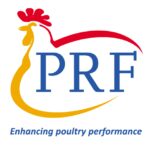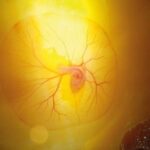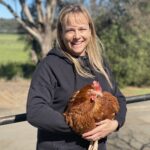
Recent Poultry Health Studies by the PRF Team
Karen Gao’s project is the first analytical epidemiological study of Spotty Liver Disease, which is a major disease problem in free range egg layers. Christine Clark’s project looked at the novel strain of Salmonella enterica serovar Enteritidis that caused major disruption to the layer industry in NSW in 2018-2020 and also spread to Victoria and Queensland.

Dr Medhi Toghyani
There is the adage – practice makes perfect. In the case of Dr Mehdi Toghyani, it is the perfect combination of commercial nutrition and nutrition science. Mehdi’s practical knowledge of nutrition is of great value to the Poultry Research Foundation (PRF) as we strive for producing effective solutions for real-life problems of the poultry industry.

Major Challenges Facing the Poultry Industry Over the Next Two Decades and Beyond
The poultry industry is the No.1 supplier of quality animal protein sources for human consumption. It does not matter whether you focus on the ethics of food production or the essence of food production, from a global food security and sustainability point of view, it is essential have a prosperous and advanced poultry industry.

Looking at Nutrient Digestibility Beyond the Traditional View
Any gain in nutrient digestibility in animals can result in big gain in feed efficiency. Feed efficiency gain is a big win for sustainability because there will be less extra ending up in the environment and less land used to grow crops. Indeed, a reduction of feed conversion ratio (FCR) by 3 points, ie., from 1.53 down to 1.50 at market weight, would save the Australian chicken meat industry approximately 56,000 tonnes of feed per year, the monetary value of this alone is staggering even for small country like Australia.

Mrs Joy Gill
The ongoing success of the Poultry Research Foundation (PRF) and its 65 years of sustained service to the Australian poultry industry are due to many people. This article profiles one of those dedicated individuals, Mrs Joy Gill.

Melinda Hashimoto Interview
Melinda is a farmer’s daughter from a small beef property (Brahman cross) in Queensland. Having attended university in Rockhampton with a Bachelor of Education she remained in the area and then travelled to Japan spending 5 years teaching there. Upon return to Australia, she completed an MBA at the University of Southern Queensland in Toowoomba. Former career roles include Adviser to Ministers for Agriculture at Federal and State Levels and QLD Department of Trade and Investment.

Poultry@Sydney
In this Edition, we will feature Dr Wendy Muir’s work on the productivity and welfare of long-life laying hens, an interview of the General Manager for Farming at Inghams, Dr Sheridan Alfirevich and the profile of PhD student, Christine Clark. In addition, I would like to talk briefly about our flagship poultry science conference, the Australian Poultry Science Symposium, known as APSS.

Supporting Longevity in Egg Laying Hens
As the global population continues to increase so does the need for food. To assist in meeting this demand egg producers are exploring opportunities to lengthen the egg laying phase of commercial flocks by 20 or more weeks. The aim is for each hen to produce 500 eggs by 100 weeks of age.

Dr Sheridan Alfirevich Interview
Sheridan completed her veterinary degree at Murdoch University and is a member of Avian Health Chapter of the Australian and New Zealand College of Veterinary Scientists. Sheridan is completing her Masters in International Animal Welfare, Ethics and Law at University of Edinburgh. She is currently employed by Inghams as General Manager of Farming.

Oregon to Oz
Christine Clark is one of our newish “Aussies” who is much loved by her colleagues in the feed and poultry industries in Australia. Christine’s PhD journey began with the impossible idea to test different feed ingredients in combination with a live salmonella vaccine program. This is an incredibly challenging program, straddling science, industry and politics.

